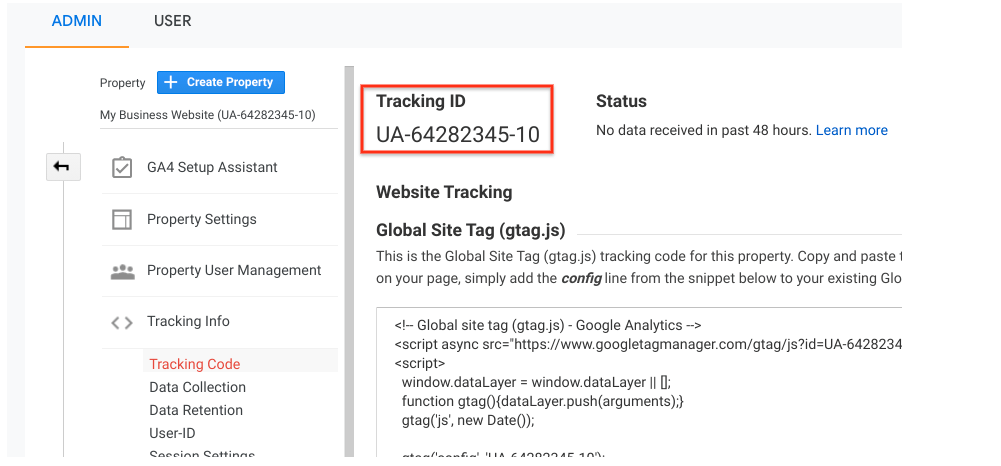Dive into Analytics: What Data Does Google Analytics Prohibit Collecting?
Dive into Analytics: What Data Does Google Analytics Prohibit Collecting?
Blog Article
Navigating the Complexities of Data Collection Limitations in Google Analytics: What You Need to Know
In the realm of digital analytics, Google Analytics stands as a foundation device for organizations to glean insights right into their on-line efficiency. Nonetheless, beneath its seemingly straightforward interface lie complexities that can affect the accuracy and reliability of the data it provides. Comprehending the ins and outs of information collection restrictions in Google Analytics is critical for making notified decisions based on the understandings originated from the system. As organizations make every effort to utilize information for calculated growth and efficiency optimization, being mindful of these constraints ends up being not just useful but essential.
Data Inconsistencies in Google Analytics
Periodically, data discrepancies might occur in Google Analytics, necessitating a detailed understanding of the system's details to successfully attend to and rectify these disparities. These inconsistencies can stem from numerous sources, such as execution problems, information tasting, filters, and even robot traffic. One typical reason for information disparities is disparities between information collected using JavaScript tracking code and data imported from various other sources like Google Ads or Browse Console.
To deal with these discrepancies, it is crucial to initial conduct a comprehensive audit of your monitoring setup. Confirm that the monitoring code is properly applied on all pages, check for any type of filters that might be changing the information, and guarantee that there are no redirects or various other technical problems disrupting data collection. In addition, familiarize on your own with usual mistakes, such as cross-domain monitoring mistakes or misconfigured goals.
Monitoring Challenges and Solutions
Given the complexities of information inconsistencies that can occur in Google Analytics, resolving monitoring obstacles and applying reliable remedies comes to be vital for guaranteeing exact and reliable data evaluation. To conquer this, carrying out individual ID tracking can help attach interactions throughout different devices under one user identifier, giving an extra alternative view of user habits.
Another monitoring difficulty comes from ad blockers and personal privacy guidelines, which can impede the collection of accurate information (What Data Does Google Analytics Prohibit Collecting?). Solutions to this consist of implementing server-side monitoring, which bypasses client-side restrictions, and respecting customer personal privacy preferences by giving clear opt-in systems for information collection

Recognizing Experiencing in Records
Tasting in records provides an approach for assessing large datasets successfully while maintaining analytical value. In Google Analytics, tasting happens when the volume of data quized exceeds a certain limit, causing the system examining only a portion of the information to supply insights. While sampling can quicken report generation and reduce handling demands, it is essential to understand its effects on the precision and dependability of the outcomes.
When handling tasted data, it's necessary to think about the potential margin of error that may arise as a result of assessing only a subset of the full dataset. The precision of the insights stemmed from tasted reports may vary, and individuals ought to translate the searchings for with caution, especially when making data-driven Recommended Site choices based on these records.
To navigate tasting in Google Analytics efficiently, users can check out options such as changing the tasting degree, making use of customized record configurations, or leveraging Google Analytics 360 for higher information limitations and even more precise reporting capabilities. By comprehending the nuances of sampling in records, users can make enlightened decisions and attract reliable verdicts from their information evaluation efforts.
Influence of Cookie Deletion on Information

Furthermore, cookie deletion can skew group and passion information, as Google Analytics relies upon cookies to categorize users based on their surfing patterns. Without this details, marketers may have a hard time to create targeted projects that reverberate with their target market. To alleviate the influence of cookie removal, organizations can motivate customers to opt-in for information monitoring, utilize various other tracking methods like user IDs, and on a regular basis keep an eye on information disparities to guarantee information integrity in Google Analytics.
Enhancing Data Precision With Filters
To improve the accuracy and reliability of data in Google Analytics, carrying out filters is an essential technique for improving data precision. Filters allow users to sort via and improve the data gathered, guaranteeing that only appropriate and precise details is consisted of in the analysis. By setting up filters, users can exclude inner website traffic, spam referrals, or any type of other unnecessary information that may alter the results. This procedure aids in offering a much more exact representation of individual behavior on an internet site, resulting in better-informed decision-making.
Filters not only assist in leaving out undesirable data however additionally enable the personalization of sights to concentrate on details segments or patterns of customer interactions. For example, filters can be put on leave out or consist of traffic from certain geographical areas, tools, or details site pages. This degree of modification improves the accuracy of the information being assessed, providing better understandings for optimizing site efficiency and advertising approaches. To conclude, making use of filters in Google Analytics is essential for boosting information precision and ensuring that notified decisions are made based on trustworthy information.
Final Thought
To conclude, browsing the intricacies of information collection constraints in Google Analytics requires a deep understanding of data disparities, tracking obstacles, sampling in reports, the impact of cookie see post deletion, and using filters to improve data precision. By attending to these challenges and utilizing proper services, organizations can make certain the integrity and precision of their data analysis for informed decision-making.
One common reason for data variances is discrepancies in between information collected through JavaScript monitoring code and information imported from various other sources like Google Ads or Search Console. What Data Does Google Analytics Prohibit Collecting?.
Given the intricacies of data disparities that can occur in Google Analytics, attending to monitoring difficulties and carrying out efficient remedies becomes critical for guaranteeing precise and dependable data evaluation. In Google Analytics, sampling takes place when the volume of information quized surpasses a certain limit, leading to the system analyzing just a section of the data to provide insights. To minimize the impact of cookie removal, businesses can motivate customers to opt-in for data tracking, make use of other monitoring approaches see page like user IDs, and consistently keep an eye on data discrepancies to make sure data integrity in Google Analytics.

Report this page